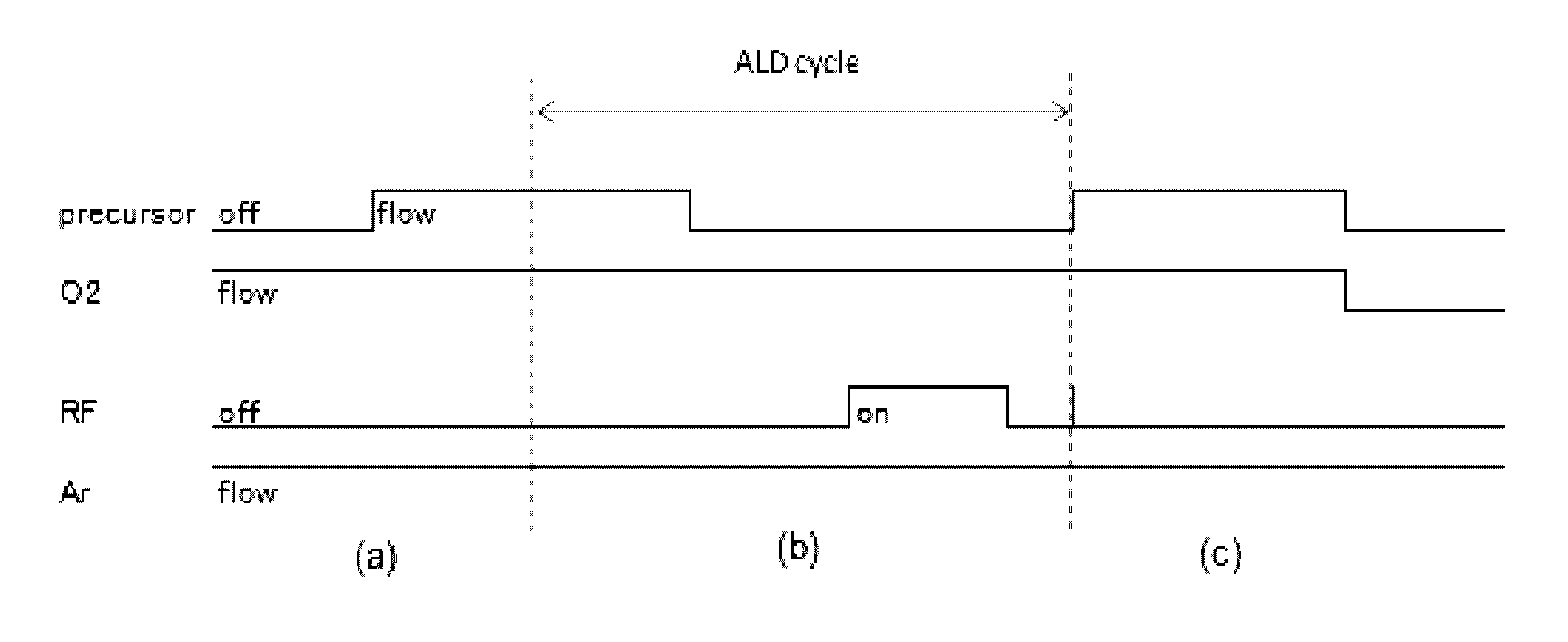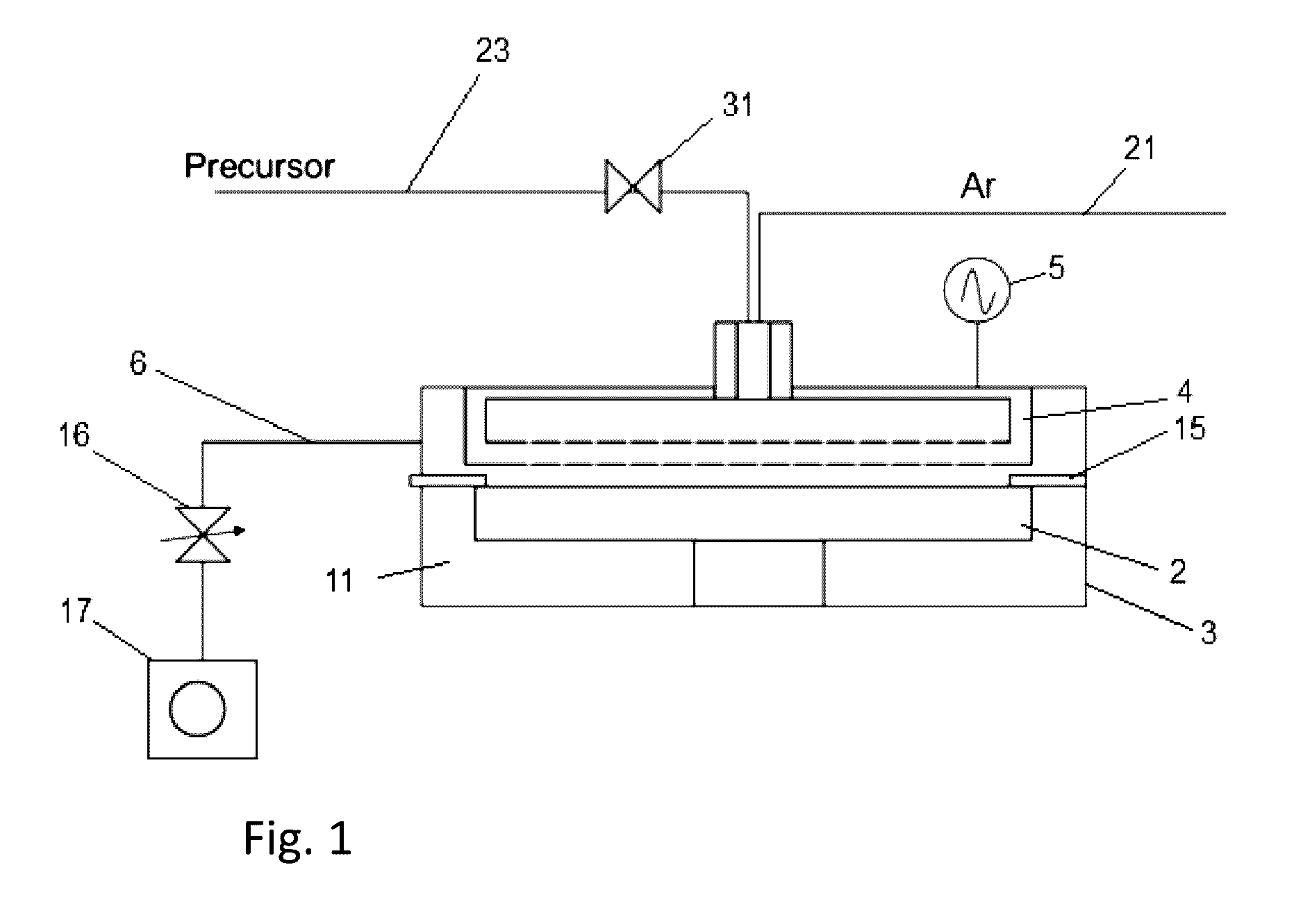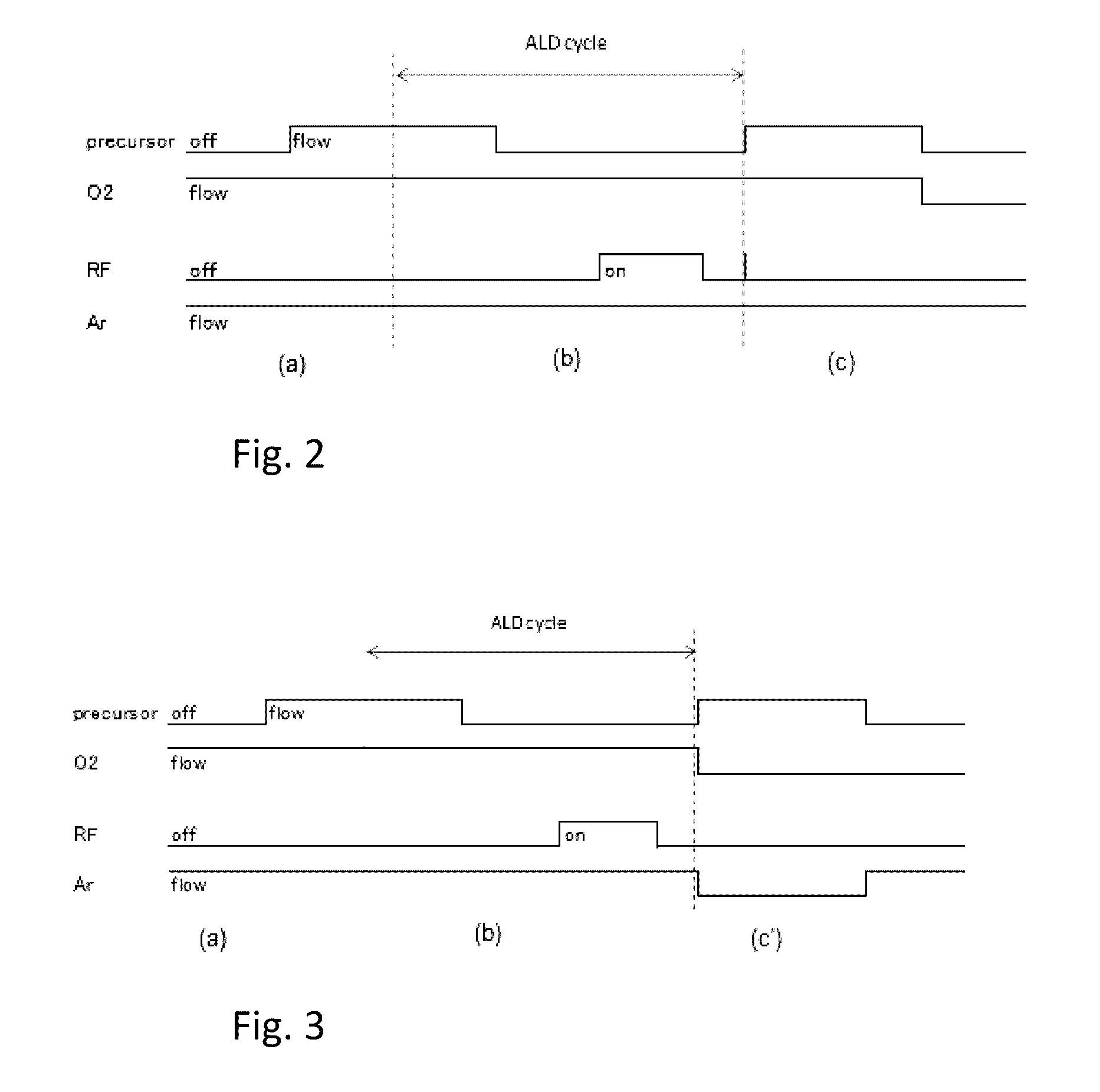Method for hydrophobization of surface of silicon-containing film by ALD
a technology of atomic layer deposition and hydrophobic surface, which is applied in the direction of coating, chemical vapor deposition coating, metallic material coating process, etc., can solve the problems of increasing dielectric constant and/or leakage current, physical damage caused by chemical mechanical planarization, and drying etching and plasma ashing,
- Summary
- Abstract
- Description
- Claims
- Application Information
AI Technical Summary
Benefits of technology
Problems solved by technology
Method used
Image
Examples
example 1
[0060]In a manner substantially similar to that in Comparative Example 1, a damaged ELK film was prepared, which had a dielectric constant of 3.0. The damaged ELK was subjected to the pore-sealing cycles under the conditions shown in Table 7 using dimethylaminotrimethylsilane (DMATMS) to obtain a pore-sealed ELK film. Next, the pore-sealed ELK film was subjected continuously to a hydrophobization step in the reaction chamber under the conditions shown in Table 8 to treat the pore-sealed surface of the film with a hydrophobic atomic layer. The process sequence illustrated in FIG. 2 was used herein.
[0061]
TABLE 7(the numbers are approximate)Pore-sealing conditionsSubstrate temperature250°C.Pressure200 PaReactant gasO2Flow rate of reactant 30 sccmgas (continuous)Dilution gasArFlow rate of dilution 500 sccmgas (continuous)PrecursorDMATMSPrecursor pulse (supply time)1 sec at 100 sccmPurge upon precursor pulse3 secRF frequency13.56 MHzRF power50 WRF power pulse1 secPurge upon the RF power ...
example 3
[0072]In a manner substantially similar to that in Example 1, a pore-sealed ELK film was prepared and subjected continuously to a surface-treating step (hydrophobization step) in the reaction chamber under conditions which were the same as in Example 1 except that the gas-exposure time (precursor supply time) varied from 0 sec to 300 sec (i.e., 0, 0.1, 0.5, 1.0, 30, 120, and 300 sec). The contact angle of each resultant treated surface is shown in FIG. 5. As shown in FIG. 5, the contact angle was drastically changed toward a hydrophobic state at a gas-exposure time of 0.5 sec, and the contact angle reached 80° at a gas-exposure time of 30 sec, i.e., rendering the surface hydrophobic. Thereafter, the contact angle appeared to reach a plateau in a range of 80° to 90°.
examples 4 and 5
[0073]In a manner substantially similar to that in Example 2, a damaged ELK film was prepared, and the damaged ELK was subjected to the pore-sealing cycles (the number of cycles was changed as shown in Table 13), and then, the pore-sealed ELK film was subjected continuously to the surface hydrophobization step in the reaction chamber. The ELK film in Example 4 had an original k-value of 2.3 and a pore size of about 1 nm, and the ELK film in Example 5 had an original k-value of 2.0 and a pore size of about 3 nm. The ELK films in Examples 4 and 5 were subjected to a chemical diffusion test where the substrate was submerged in a liquid chemical (ethanol) for 5 minutes, and then a cross section of the substrate was observed to see if the chemical penetrated through the surface and diffused toward the inside the substrate. The results are shown in Table 13.
[0074]
TABLE 13Thickness of pore-sealing film Original(the number of ALD cycles)k-value0 nm0.5 nm1 nm1.5 nm(pore size)(0 cycles)(5 cyc...
PUM
| Property | Measurement | Unit |
|---|---|---|
| contact angle | aaaaa | aaaaa |
| RF power | aaaaa | aaaaa |
| pore size | aaaaa | aaaaa |
Abstract
Description
Claims
Application Information
 Login to View More
Login to View More - R&D
- Intellectual Property
- Life Sciences
- Materials
- Tech Scout
- Unparalleled Data Quality
- Higher Quality Content
- 60% Fewer Hallucinations
Browse by: Latest US Patents, China's latest patents, Technical Efficacy Thesaurus, Application Domain, Technology Topic, Popular Technical Reports.
© 2025 PatSnap. All rights reserved.Legal|Privacy policy|Modern Slavery Act Transparency Statement|Sitemap|About US| Contact US: help@patsnap.com



